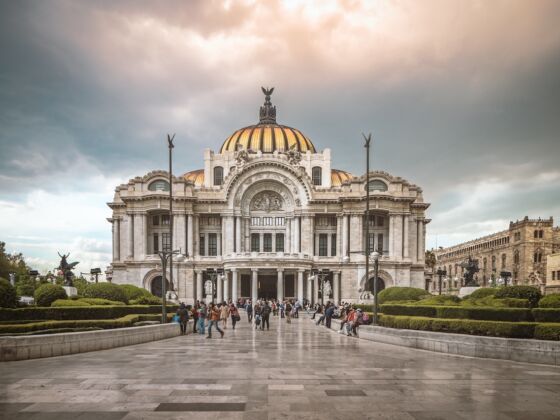BACK IN THE NINETEENTH CENTURY, my hometown of Cincinnati was referred to as the “Paris of the Americas.” This was Cincinnati’s boom time, and we had spent some money on good architecture and a bit of culture. But it was a bit of an exaggeration. Cincinnati is maybe the Paris of Ohio (it could be beat out by the township that is actually named Paris), but it’s a stretch to call it the Paris of the Americas.

That title — “the Paris of _____,” — has been applied to countless other cities around the world. Like Buenos Aires (the actual Paris of the Americas), or Beirut (the Paris of the Middle East), Turin (the Paris of Italy), Asheville (the Paris of the South), Pittsburgh (the Paris of Appalachia), Ho Chi Minh City, Shanghai, and Pondicherry (all the Paris of Asia). This title has become so widespread and overused that it says much less about the city it’s being applied to than it says about Paris itself. Paris is so culturally rich that we use it as a superlative. It would be like if your high school senior class started using your name for the year’s “Best Smile” award. “The Matt of 2016,” they would call it (Editor’s note: Matt did not win his high school’s “best smile” award, and is totally okay with it).
Paris is no longer the cultural center of the world.
But what made Paris the center of the world was not only it’s first-rate history and culture: it was its cost of living. That’s the reason why so many great artists could afford living there. While Hemingway was living in Paris, he wrote an article in the Toronto Star titled, “A Canadian with $1000 a year can live very comfortably and enjoyably in Paris.” That $1000 would be around $13,500 now — still an absurdly small amount of money. George Orwell wrote an entire book — Down and Out in Paris and London — about scraping by on next to nothing in the City of Lights.
It’s no longer that easy or affordable to live in Paris. So the Paris of the 2010’s is not the same as the Paris of the 1920’s. The Moveable Feast is now totally unaffordable for the modern artist and expatriate. Which city, then, should take its place?
The criteria
If we’re going to crown a Paris of the 21st Century, we’re going to need a set of criteria. Obviously, the town needs to have a rich cultural history, but more than that, it needs to be an international city. Which disqualifies awesome cultural hubs like Austin, Texas, that are still more regional than international, and cities in countries with relatively strict immigration policies like Japan (goodbye, Tokyo).
The next thing we need to consider is cost of living. And that’s where most of the world’s great cities get knocked off the list. London? Gone. New York? Not even close. San Francisco, Sydney, Singapore, Hong Kong, Copenhagen, Stockholm and yes, Paris, all are too expensive to host la vie boheme. In fact, virtually all of Europe is gone: the seven cheapest cities in Europe are all in Eastern European cities that don’t quite make our “international city” cut.
As far as I can tell, there’s one clear frontrunner:
Mexico City
Probably the strongest contender in the world is Mexico City. Mexico City is the largest city in the Western Hemisphere, and has over 150 museums, the most of any city in the world. It has the Frida Kahlo House. It has the punk rock flea market.
It has some of the best food in the world — at some of the best prices. And its cost of living is really low compared to the United States — Investopedia estimates that a student could live comfortably for between $750 to $1000 a month (which is cheaper than Hemingway’s Paris). Let’s call it: Paris is the Mexico City of Europe.
What city do you think is the Paris of the 21st Century? Istanbul? Mumbai? Bangkok? Bogota? Sound off in the comments!